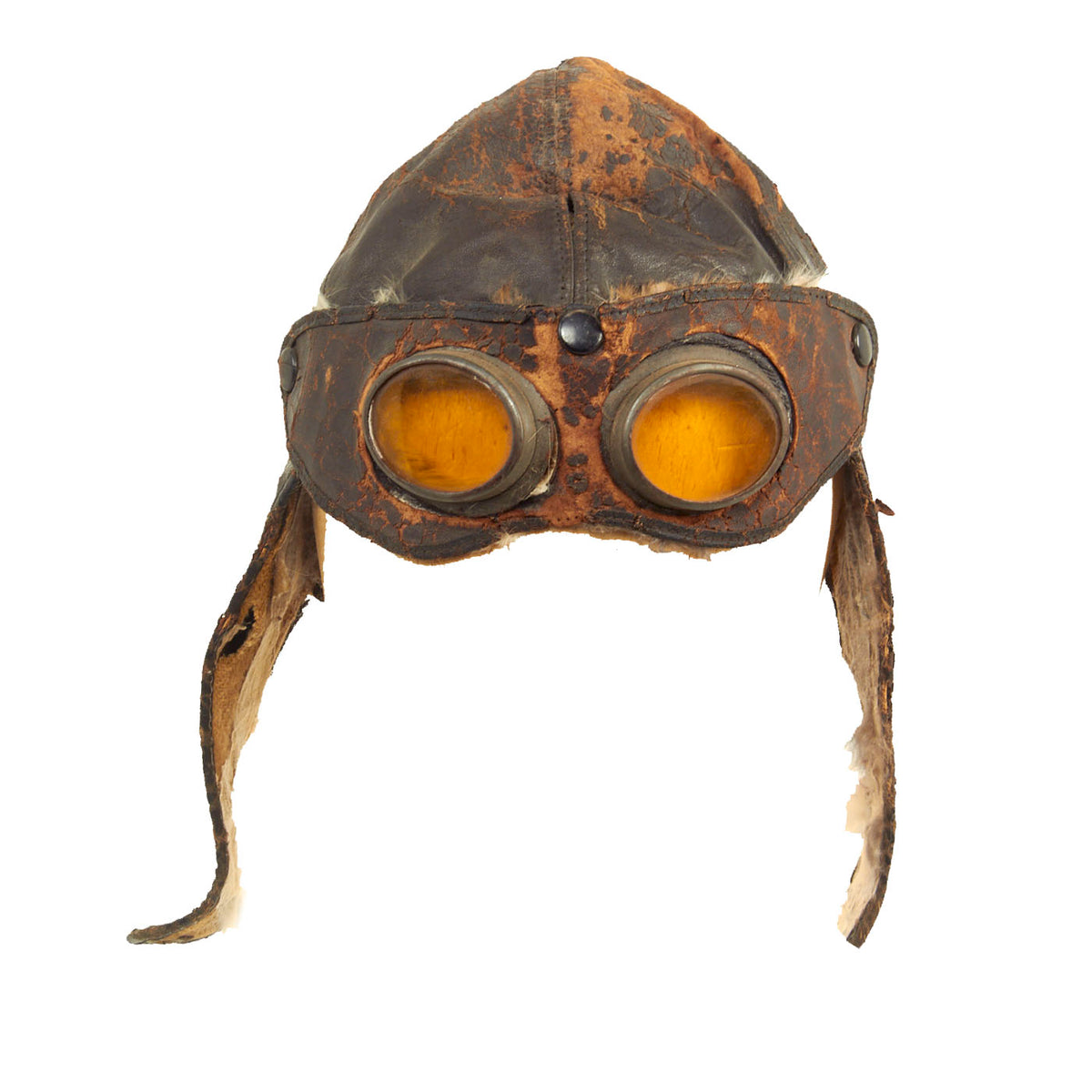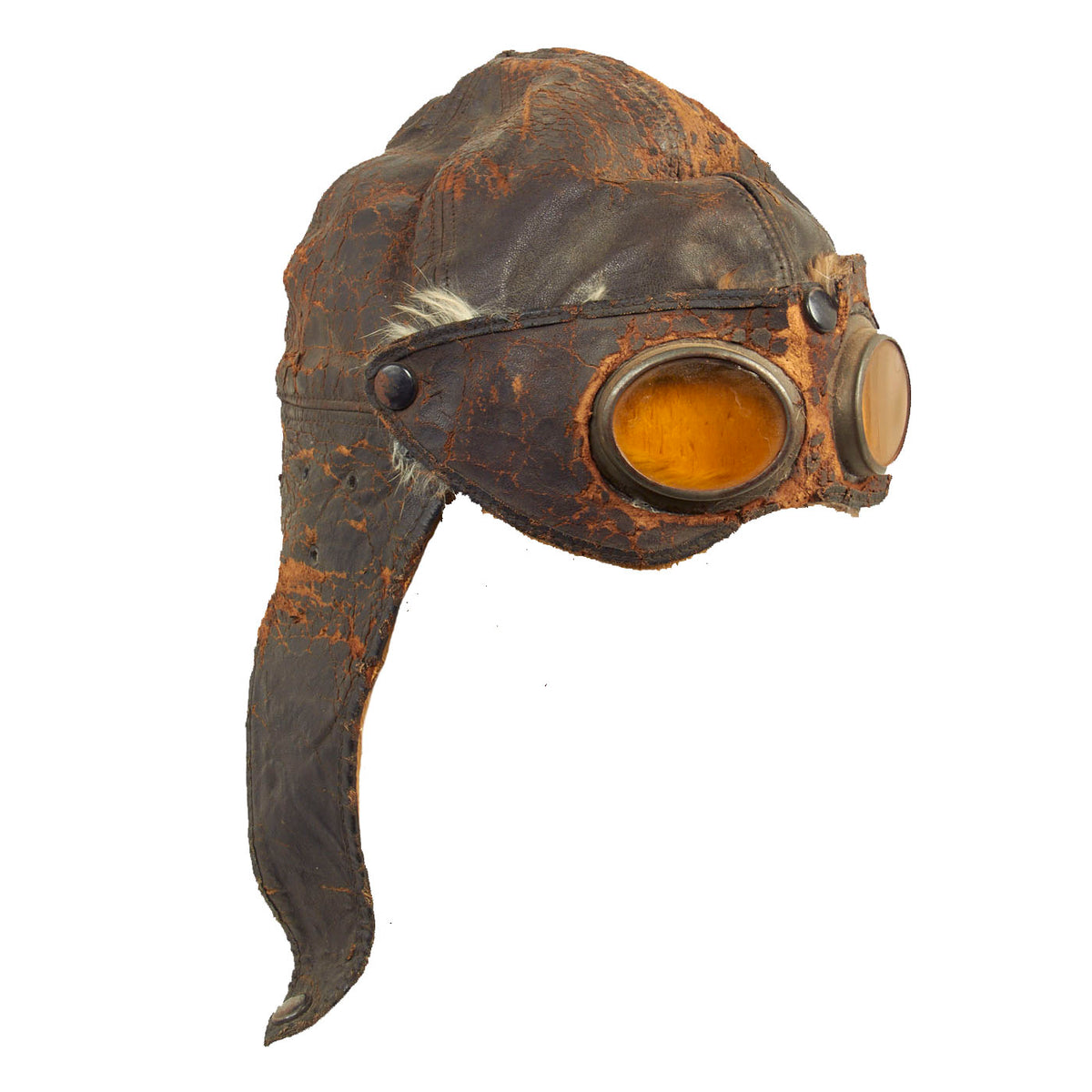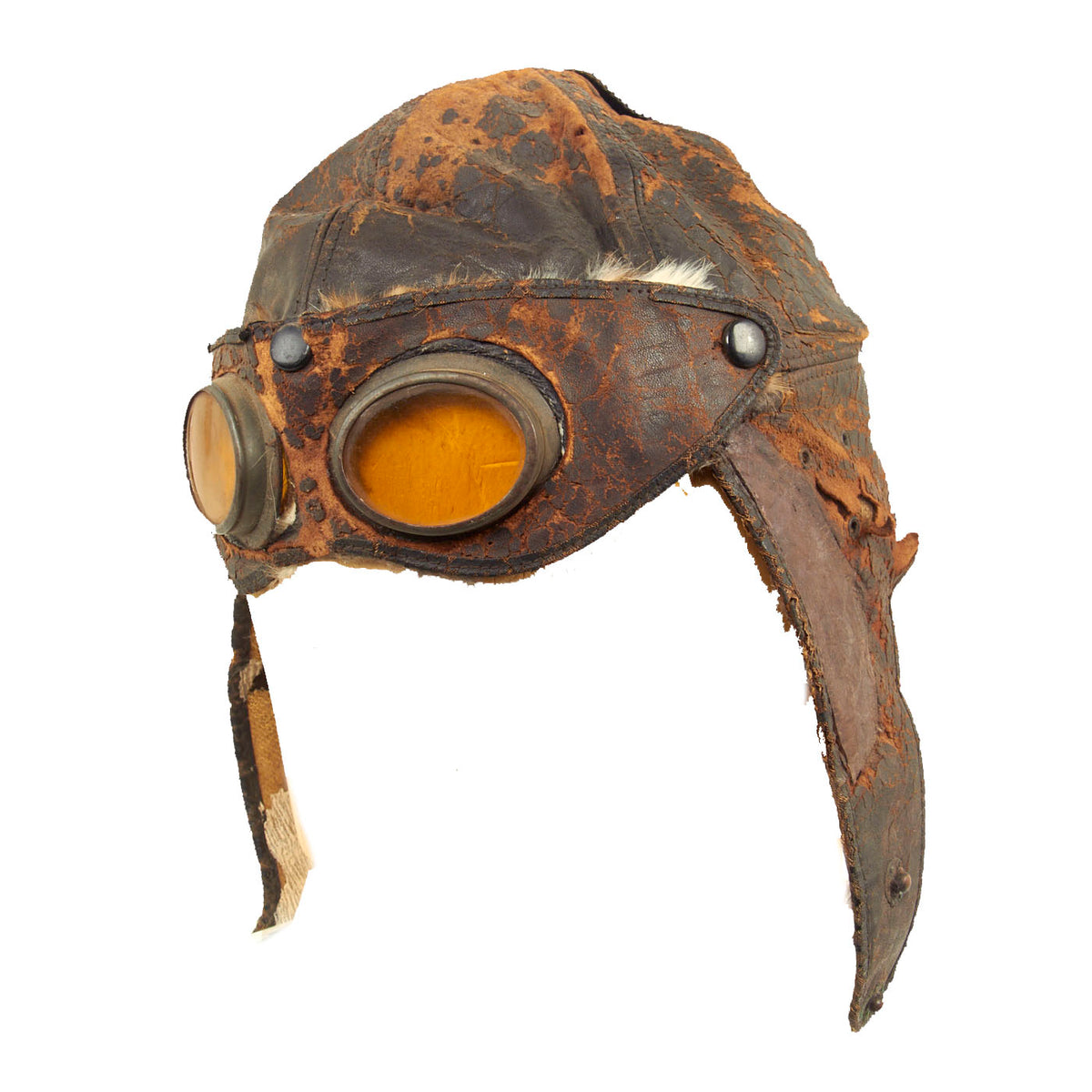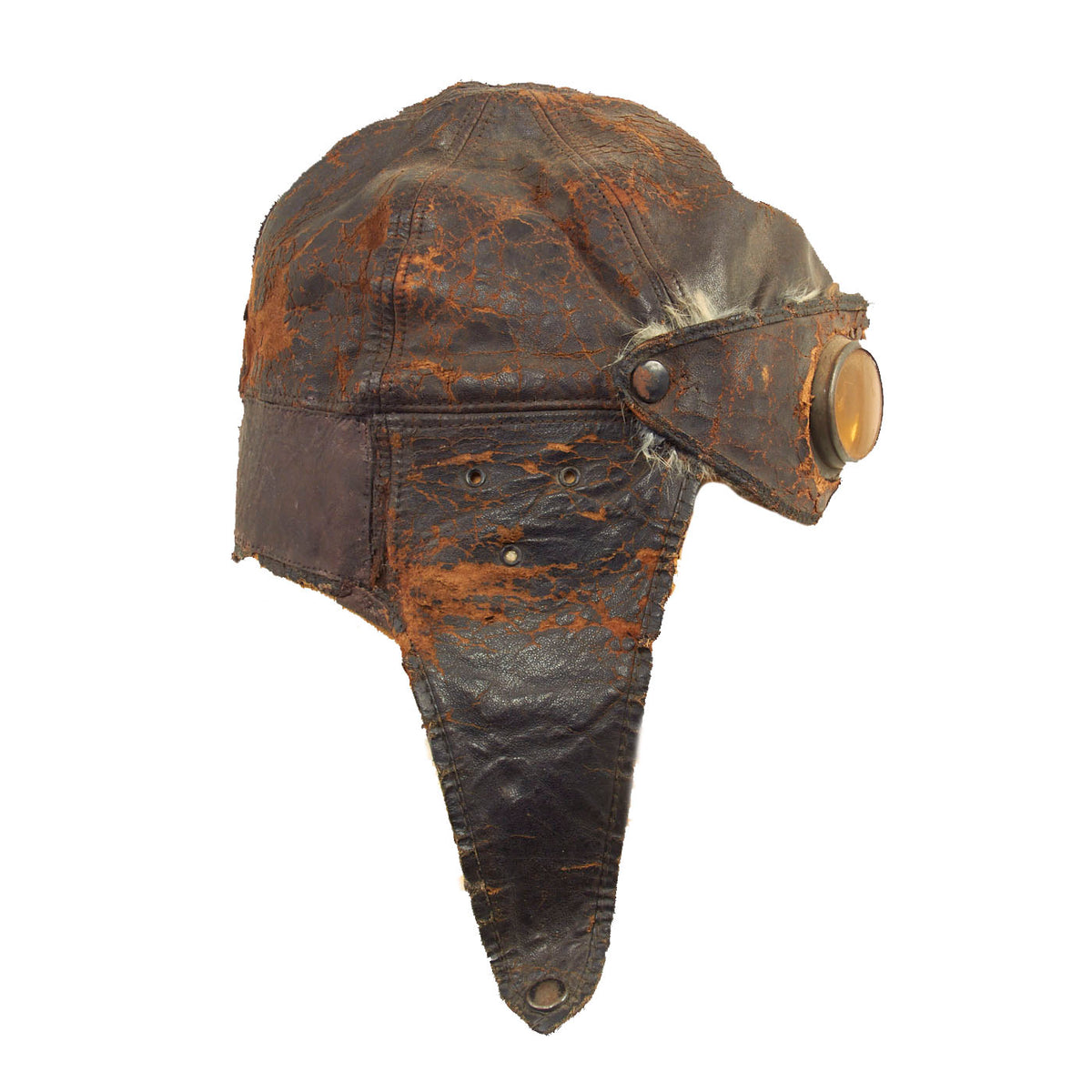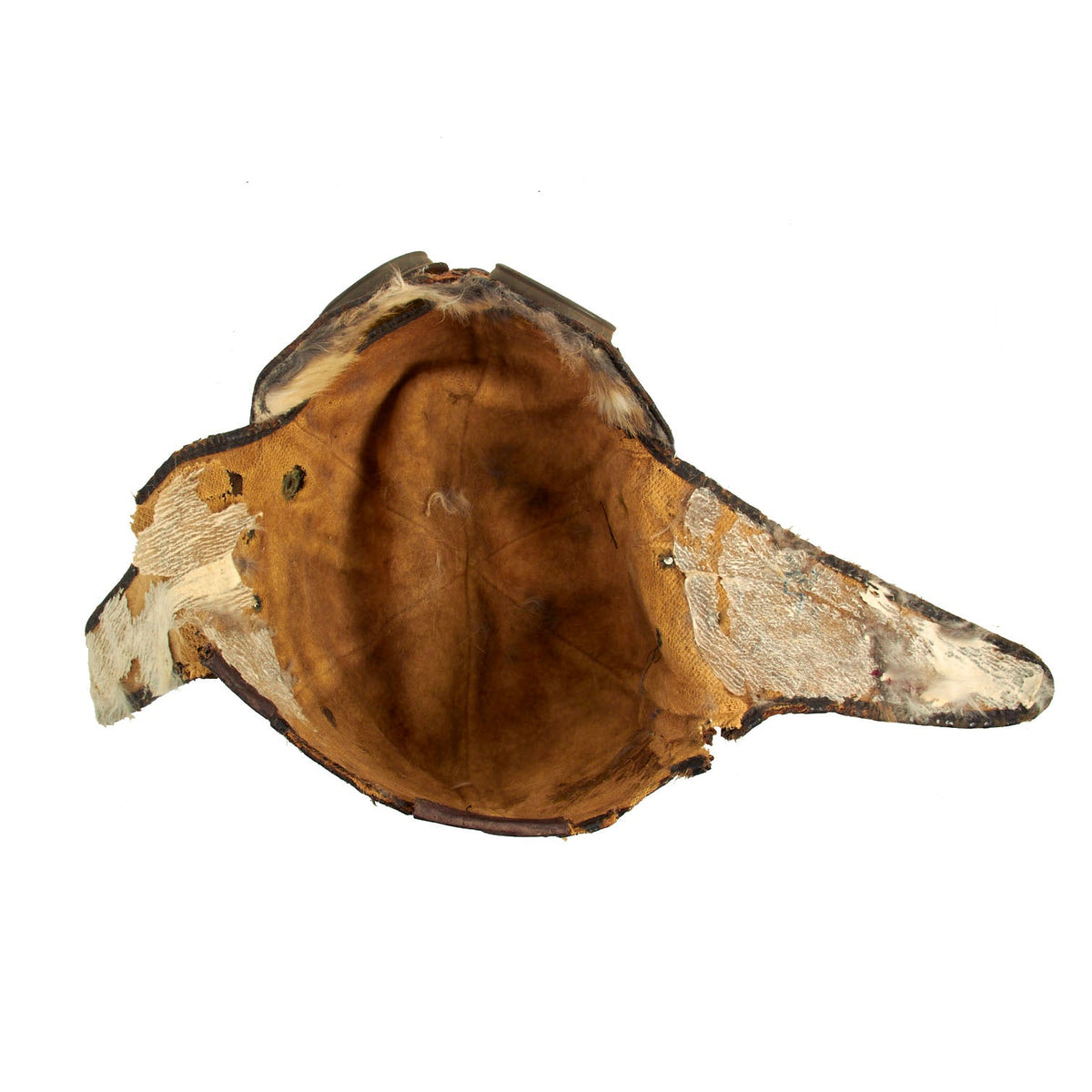Original France WWI French Armée de l’Air Air Force Pilots Leather Flight Helmet With Button On Goggles Original Items
$ 295,00 $ 118,00
Original Item: Only One Available. During the first years of aviation, pilots started wearing leather flying helmets as a form of protection from the cold and the noise of aircraft engines. Leather was becoming a popular choice for protective gear with the rise of motor sport and aviation at the start of the 1900s. It has many advantages that made it the ideal material for flying helmets. It is warm, durable, impermeable to liquids therefore waterproof, flexible and can be cut to curve around the head. It is wind-proof and has the great advantage of not accumulating dust. It was also found that leather helmets offered a level of protection against fire. British Engineers led by Charles Edmond Prince added Throat microphones & earphones into these helmets during World War I for hands free communications in the noisy and windy environment of aircraft cockpits.
This example is unmarked, but due to the construction and appearance, it is our belief that this helmet is of French origin. The condition is good for the age, but there is extensive cracking present in the leather and almost feels delicate. There is still strong stitching present and what appears to be period leather reinforcements and repairs done. Seeing how these helmets were popular both on and off the battlefield, this helmet could have continued its service after the war by early automobile and motorcycle enthusiasts. The lining appears to have once been rabbit fur and soft chamois, however the fur on the ear flaps is almost completely gone. The attached goggles are in similar condition to the helmet, but appears to have retained the rabbit fur lining better. The lenses are amber in color and are the same plastic type material as seen on WW1 German gas masks.
A lovely, hard to find example that comes more than ready for further research and display.
During the first decade of the 20th century France was at the forefront of aviation progress, with pioneers such as Louis Blériot, Henri Farman, Gabriel Voisin, Édouard Nieuport, Gustave Delage and Louis Béchereau and this led to early interest in aircraft by the military. The French defeat during the Franco-Prussian War of 1870–1871 was still very fresh, and France expected to face Germany again. From December 1909, the French Department of War began to send individuals from all branches of the army, especially engineering and artillery, to undergo flying training at civilian schools as “pupil-pilots” (élèves-pilotes) such as at Reims and Bron. In March 1910, the Établissement Militaire d’Aviation (EMA) was created to conduct experiments with aircraft and on 22 October 1910 the Aéronautique Militaire was formed as a branch of the Army under the command of General Pierre Roques, although they would have to wait until mid-1911 the first military aviation brevets to be awarded to army pilots and 29 March 1912 for the law officially establishing the Aéronautique Militaire to be passed.
Fast Shipping with Professional Packaging
Thanks to our longstanding association with UPS FedEx DHL, and other major international carriers, we are able to provide a range of shipping options. Our warehouse staff is expertly trained and will wrap your products according to our exact and precise specifications. Prior to shipping, your goods will be thoroughly examined and securely secured. We ship to thousands clients each day across multiple countries. This shows how we're dedicated to be the largest retailer on the internet. Warehouses and distribution centres can be located throughout Europe as well as the USA.
Note: Orders with more than one item will be assigned a processing date depending on the item.
Before shipping before shipping, we'll conduct a thorough inspection of the items you have ordered. Today, the majority of orders will be delivered within 48 hours. The delivery time will be between 3-7 days.
Returns
The stock is dynamic and we cannot completely manage it because multiple stakeholders are involved, including our factory and warehouse. So the actual stock may alter at any time. It's possible that you may not receive your order once the order has been made.
Our policy is valid for a period of 30 days. If you don't receive the product within 30 days, we are not able to issue a refund or an exchange.
You can only return an item if it is unused and in the same state as the day you received it. You must have the item in its original packaging.
Related products
Uncategorized
Uncategorized
Uncategorized
Uncategorized
Uncategorized
Uncategorized
Uncategorized
Armoured Fighting Vehicles of the World: AFVs of World War One (Hardcover Book) New Made Items
Uncategorized
Uncategorized
Uncategorized
Uncategorized
Armored Burgonet Helmet & Polearm from Scottish Castle Leith Hall Circa 1700 Original Items
Uncategorized
Angolan Rebel 1970s era 60mm Inert Display Mortar from Angolan Civil War Original Items
Uncategorized
Uncategorized
Uncategorized
